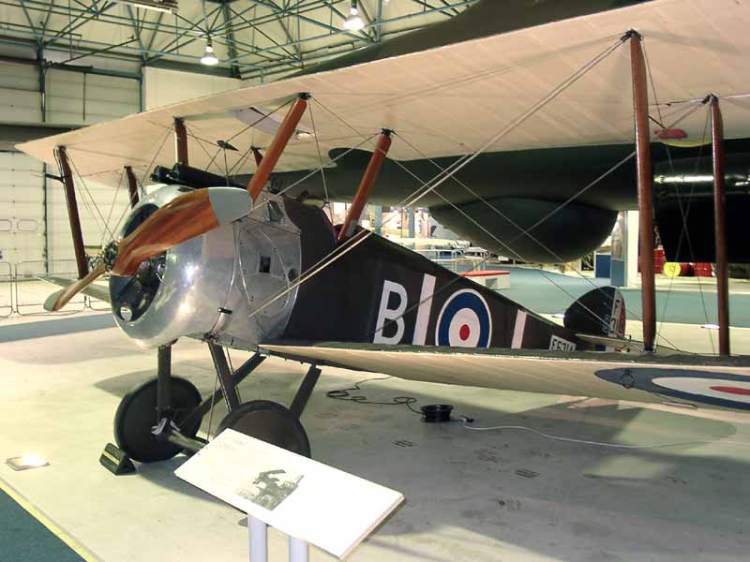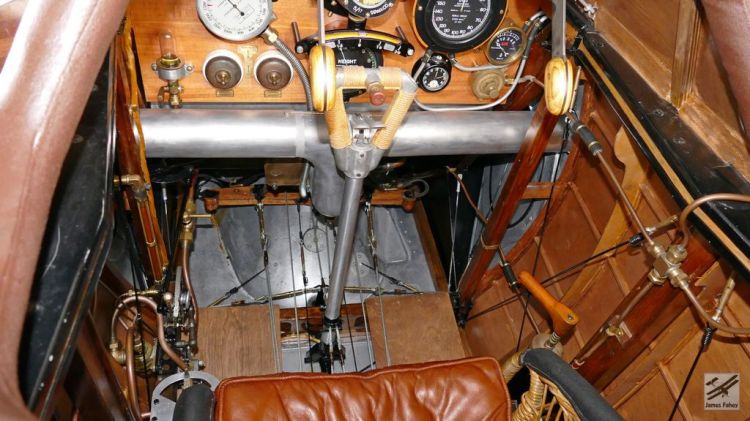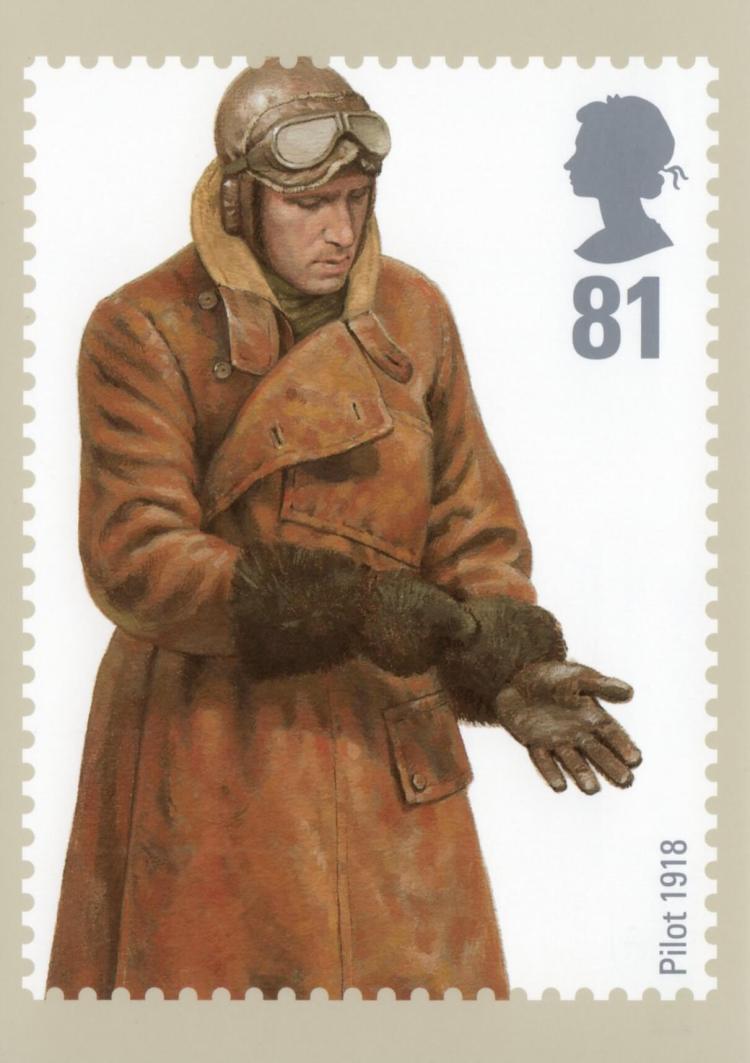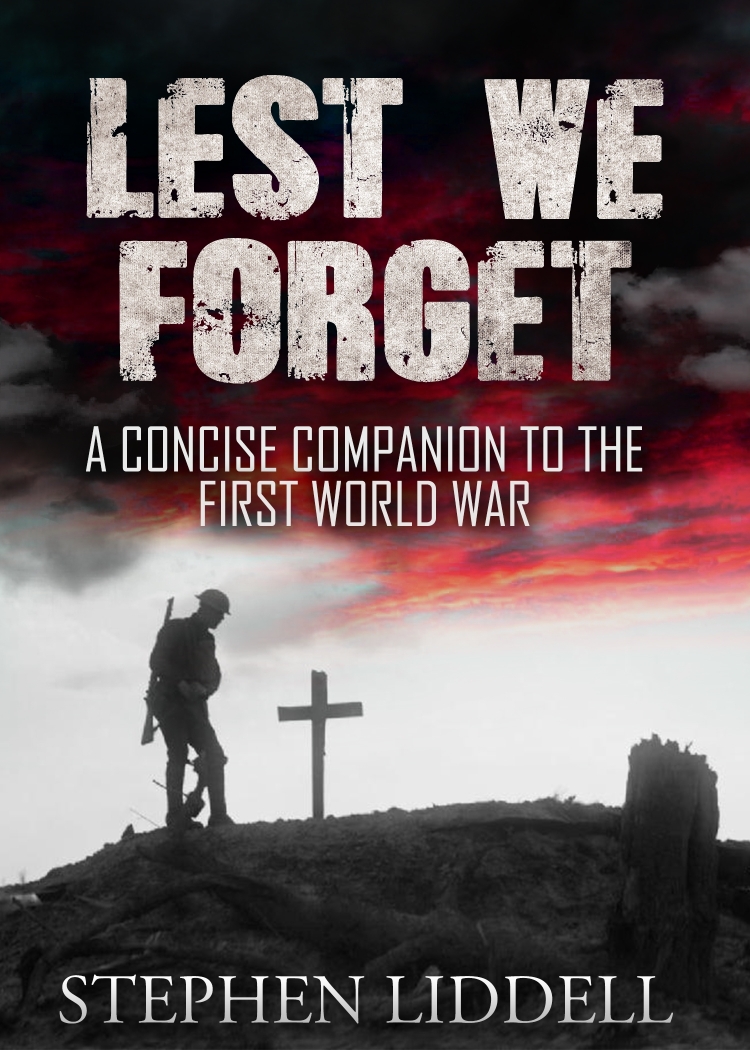The first really star plane of the Royal AirForce was the Sopwith Camel which was already in service for the Royal Flying Corps.
The Camel grew out of the Sopwith Pup, a little fighter introduced in 1916, but which was soon outclassed by the German Albatroses and Halberstadts.
Its name derived from the slight hump forward of the cockpit. Its twin 30 caliber Vickers machine guns enabled it to destroy its (by WW2 or modern standards) flimsy opponents. In all, 5,490 were manufactured.
The plane wicked torque and killed a lot of novice British pilots, but the Sopwith Camel shot down 1,2494 German aircraft making it the most successful plane.

Though one of the better planes of WW1 and they did become much more advanced by the end of the war than at the beginning, you can see just how fragile they were. By the end of war best planes were still only capable of going up to 130mph and so much of the war was spent fighting in planes that weren’t really going any faster than a car.
The photo below gives an indication of what the cockpit of a Sopwith Camel is like and just how flimsy it is to modern eyes. Steel plating had been invented but it was heavy and slowed the planes down and so most pilots had no protection at all from bullets or the environment.

My relation Reuel Dunn was in a similar Sopwith plane when he fought the Red Baron.
Looking at the commemorative stamp below you can see the typical gear that a pilot in the RFC or early RAF might wear. Leather coat, cap and gloves to keep as warm as possible in the cockpit that was open to the elements.
Googles were very important to the relatively primitive engines and guns had a tendancy to leak and splatter oil in the face of the pilot.
If you look closely you might be able to see the pilot is wearing a silk scarf. These days lots of people make a bit of fun of the stereotype of carefree WW1 pilots with their scarf fluttering in the wind but it actually served several purposes as well as keeping them warm. With no sort of window, an enemy plane could appear without warning from any angle and a pilot would spend much of their sortie looking around at every angle trying to see if any planes were approaching and the scarf would stop their necks from chaffing on their coats and uniforms. Also the scarf would be used to wipe away oil splats from their goggles.

Life as a WW1 pilot was terribly dangerous and though we are all familiar with the massive death tolls in the trenches, though their numbers are far smaller for those who actually flew in WW1 the death rate was staggeringly high. When you think about it a WW1 air battle was essentially a duel and though there were definite skills and tactics involved as well as dollops of luck, when it came down to it the battle would only end when one of the pilots was dead and that was pretty much 50/50 who it might be.
Should a plane catch you unawares then it was hugely difficult to shake him from behind you and all the time your opponent would be mirroring your every move whilst unloading machine gun bullets into you aeroplane.
Though a comedy, the Blackadder sketch below gives some indication of how long your life expectancy might be as a novice pilot with the famous 20-minutes scene below.
As well as always having to be on the look out for the changing locations of the front lines in the Western Front that in places were very volatile, you also had to keep an eye out for Archie or what in WW2 became known as Ack-Ack Anti-Aircraft fire. Mechanical malfunctions frequently occurred and a life could easily be saved or lost by an untimely malfunctioning of a machine-gun for example depending if it was yours or that of your enemy.
Pilots had to really think like predators, fly as high as possible as that would not only help you see planes below but also give you a chance to dive and pick up speed to attack your enemy (and hope it isn’t a sitting duck diversion to lure you in and have the enemy attack you from even higher).
Alert pilots would wherever possible fly with the sun behind them so that they would be invisible to enemy aircraft coming towards them due to the bright sunlight. Not flying in a straight line was always a good idea too.
I hope that gives a bit of an idea of what life was like as a WW1 pilot and these early aviation heroes who flew in planes like the iconic Sopwith Camel. You can see a Sopwih flying around in the video below and if you don’t want to watch it all, skip ahead towards the end and see just how slow it is travelling when it comes in for landing.
And don’t forget to get my WW1 history book Lest We Forget published by Endeavour Press and available in Kindle or Paperback
Incidentally if you have even a passing interest in WW1 in the air then I recommend the fictional adventures of Biggles written by WW1 pilot W.E. Johns

An interesting Insight in to a great Warplane!
LikeLiked by 1 person
I’m glad you liked it. I’ve been a fan of this plane for 35 years since it was one of my first and best airfix plastic models 🙂
LikeLike
I’m an amateur military historian having studied WWI and WWII technology quite extensively. The Sopwith Camel was an impressive fighter aircraft with exceptional maneuverability. Its combat effectiveness cannot be overstated. However, it had weaknesses like any other plane. The Camel’s center of gravity made it very difficult to fly, and the torque from its radial engine resulted in disproportionate performance in the turn (disfavoring the left). Opposing German fighter pilots quickly realized this and anticipated Camels turning to the right. Furthermore, the Camel was not a particularly fast aircraft. Near the end of the war, it began to be replaced by the Sopwith Snipe.
The other notable fighters contemporary with the Camel were the more stable and high-altitude performing S.E.5 (British), the fast and rugged Spad XIII (French), and the superbly designed and well-balanced Fokker D.VII (German).
LikeLiked by 1 person
Thanks so much for your comments Robert. I was thrilled to learn and hear from something of an expert! Now you mention it, I seem to remember about the tendancy for pilots turning to the right but as you say, despite its sometimes deadly quirks, the pilots of the day seemed to think kidnly of them. Those other 3 planes are all legendary too, a bit of a shame that they are largely forgotten today in comparison to more recent military planes. Nothing evoked more fear in Allied pilots than the Fokker. Your comment made me go and check out a video of the Spad on Youtube. I read about them in my childhood but it really does look a plucky little plane when in the air!
LikeLiked by 1 person
My pleasure, Stephen. I’m not really an expert, though, just an amateur historian.
My interest in WWI fighter aircraft began as a child when I read a book on No. 40 and No. 74 squadrons (RAF) “Tiger Squadron” by Ira Jones. His personal accounts of those deadly aerial battles was gripping to say the least. Unfortunately, I’ve since lost that paperback copy from my bookcase. In it, flight commander Mick Mannock is credited with 72 victories – if I recall correctly – the highest total for a British ace in WWI; however, his official number is 61 placing him slightly lower on that list. There seems to be some inconsistency in the online sources I checked today. Cheers,
LikeLiked by 1 person
Reblogged this on sed30's Blog and commented:
True hero’s lest we forget
LikeLiked by 1 person
Another fascinating article Stephen. Will look forward Tony next visit to RAF Hendon to see the Sopwith Camel there.
LikeLiked by 1 person
Thanks Nigel. It’s a freat little plane and despite its seeming fragility, there is something i quite like about them compared to modern day planes that for passengers at least leave one a bit detached from reality.
LikeLike
My only knowledge of the Sopwith camel was that Snoopy, from the Peanuts cartoons, flew one when fought the Red Baron. Thanks for a more complete story!
LikeLiked by 1 person
I know the image of Snoopy flying around in that plane. I’m glad that they picked the right plane for it!
LikeLiked by 1 person
A quite fascinating read! Thanks Stephen. The Hendon museum was one of my most memorable days spent in London. The nearest I spent with the sopwith camel experience was in a friend’s two seater mototized glider. He even let me on the controls for a while. Exciting . I flew it facross south Tuscany. So memorable but then no red baron was behind us!
LikeLiked by 1 person